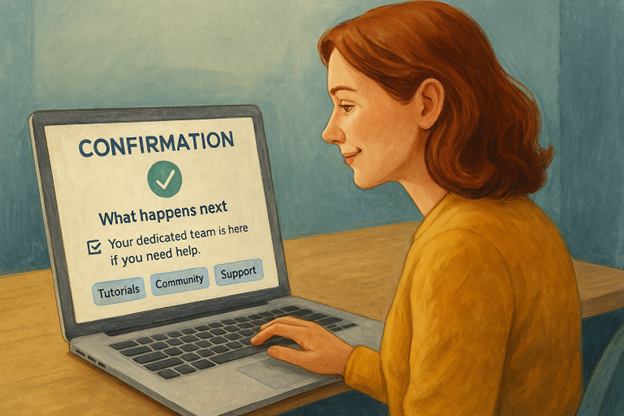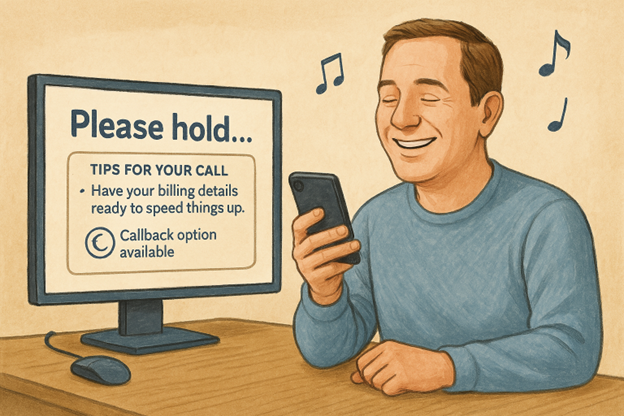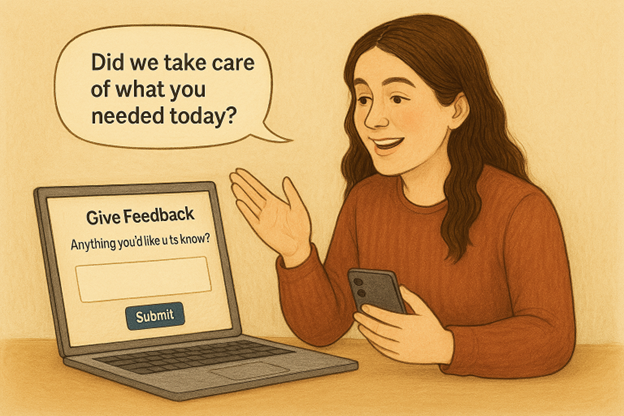By
Corey Goldbaum
|
Date Published: April 21, 2025 - Last Updated April 21, 2025
|
Comments
Customer experience teams are under constant pressure to evolve. But when people hear “transformation,” it often brings to mind massive tech rollouts, months of planning and full system overhauls. For many leaders, especially in BPO and service-driven environments, that kind of change feels less like progress and more like disruption.
But what if transformation could start smaller? What if it could begin with a shift in thinking, not a shift in platforms?
Some of the most impactful improvements don’t require rebuilding your entire CX ecosystem. Instead, they come from taking a fresh, intentional look at the everyday practices we’ve come to take for granted.
It all starts with a deceptively simple question:
“Why do we still do it this way?”
This article explores five low-lift, high-impact ways to reimagine common CX touchpoints — turning routine moments into relationship-building opportunities. These ideas are actionable now, whether you're leading an internal support team, managing a BPO operation, or designing service flows for enterprise brands.

1. Turn Confirmation Emails Into Onboarding Moments
What it is:
A generic confirmation email sent after a purchase, form fill or case closure.
How to reimagine it:
These emails often feel like digital receipts — transactional and forgettable. But they’re actually your first real chance to shape the post-interaction experience. Reframe them as mini onboarding moments that guide, reassure and build momentum.
Try this:
- Add a “What happens next” checklist or timeline to set expectations.
- Personalize it: “Your dedicated team is here if you need help.”
- Offer quick links to resources like tutorials, community forums, or support.
Why it works:
Customers are most engaged immediately after taking an action. A thoughtful confirmation email reinforces trust and reduces downstream confusion or service requests.

2. Rethink Hold Music as a Micro-Engagement Channel
What it is:
Traditional music or repetitive recordings customers hear while on hold.
How to reimagine it:
Hold time is often viewed as dead space, but it’s actually a captive moment. You can use that time to deliver light-touch education, reassurance or even brand storytelling.
Try this:
- Share tips to help the customer prepare for the call (ex. “Have your billing details ready to speed things up.”)
- Insert real customer testimonials or stories.
- Offer a callback option, but explain the benefit clearly (“We’ll hold your place in line because your time is important to us, and call you when a specialist is available.”)
Why it works:
While you may not always be able to reduce actual hold time, you can change how the customer perceives that time — and perception often matters more.

3. Make Surveys Feel Like Conversations, Not Scorecards
What it is:
Standard post-interaction CSAT or NPS surveys.
How to reimagine it:
Customers are burnt out on cold, one-sided feedback forms. The problem isn’t the surveys themselves — it’s the feeling they create. Make your feedback channels feel more like a genuine request for partnership, and less like a metric grab.
Try this:
- Ask “Did we take care of what you needed today?” instead of “Rate your satisfaction.”
- Lead with an open-ended field: “Anything you’d like us to know?”
- Share a real example of how customer feedback drove a change (bonus: automate this into your thank-you email).
Why it works:
When people feel heard, they’re more likely to engage — and more likely to give actionable insights, not just a star rating.

4. Equip Agents with a Curiosity Toolkit
What it is:
Scripts, call flows and QA frameworks focused on compliance and resolution.
How to reimagine it:
Agents are already solving problems. Give them a simple structure to go one step further: discovering why the problem happened and how it might be prevented.
Try this:
- Encourage one new question per call: “Is there anything that could’ve made this easier for you?”
- Give agents a place to flag common friction points — form errors, confusing IVR options, etc.
- Run a weekly “friction trends” huddle with ops, QA and training teams to fix root causes.
Why it works:
Your frontline teams have a unique lens into the customer journey. Empowering curiosity turns reactive service into proactive improvement — and makes agents feel more invested in experience optimization, too.

5. Let Your System Messages Reflect Your Brand Voice
What it is:
The automated system messages customers see when they hit an error or wait state.
How to reimagine it:
System copy is often treated as a technical task, not a brand experience. But these messages usually show up at high-frustration moments, and they absolutely shape how customers feel about your brand.
Try this:
- Replace “Your session has timed out” with “Looks like we lost you. Let’s get you back on track.”
- Add warmth or clarity: “Thanks for your patience. Our system is catching up.”
- Review all system messages across platforms and rewrite them with a consistent tone of voice.
Why it works:
Thoughtful copy humanizes digital experiences. These moments may seem small, but together, they shape emotional trust and loyalty.
Final Thought
Reimagining CX doesn’t always mean overhauling infrastructure or launching big-ticket initiatives. Sometimes, the most powerful shifts come from seeing old things with new eyes.
Ask yourself:
- What moments in our experience are “fine,” but forgettable?
- Where do customers feel uncertainty, even if the process is technically sound?
- Where could we replace efficiency with empathy, without sacrificing either?
Pick one process. One tool. One email.
Reimagine it with intention — and see what happens.
Because when it comes to CX, how it feels often matters more than how it works.